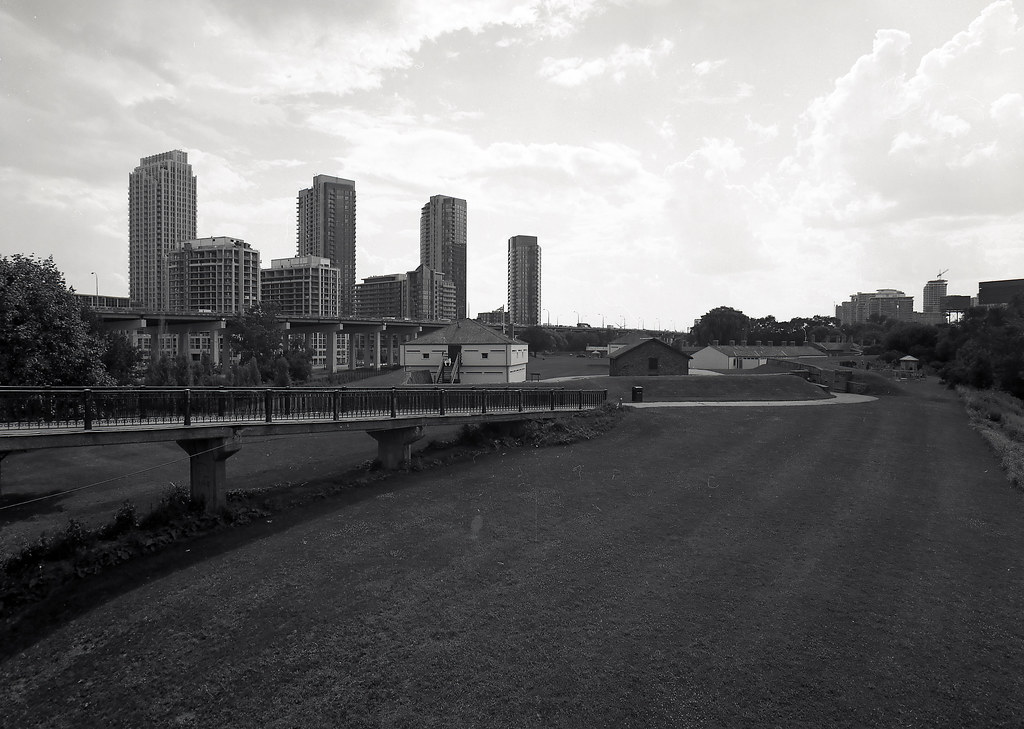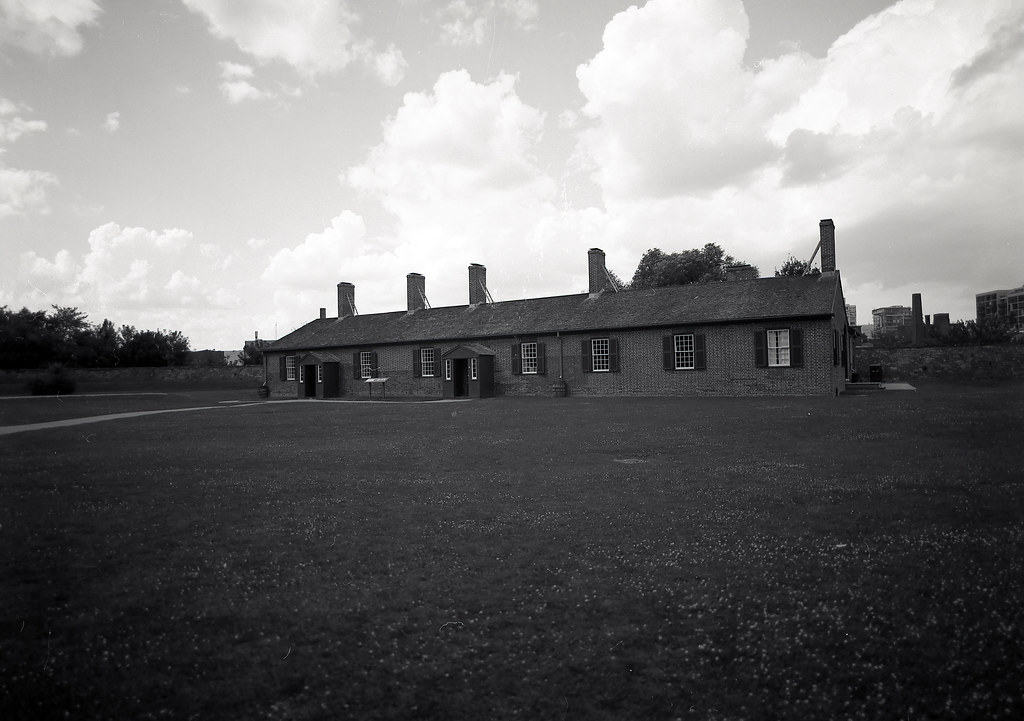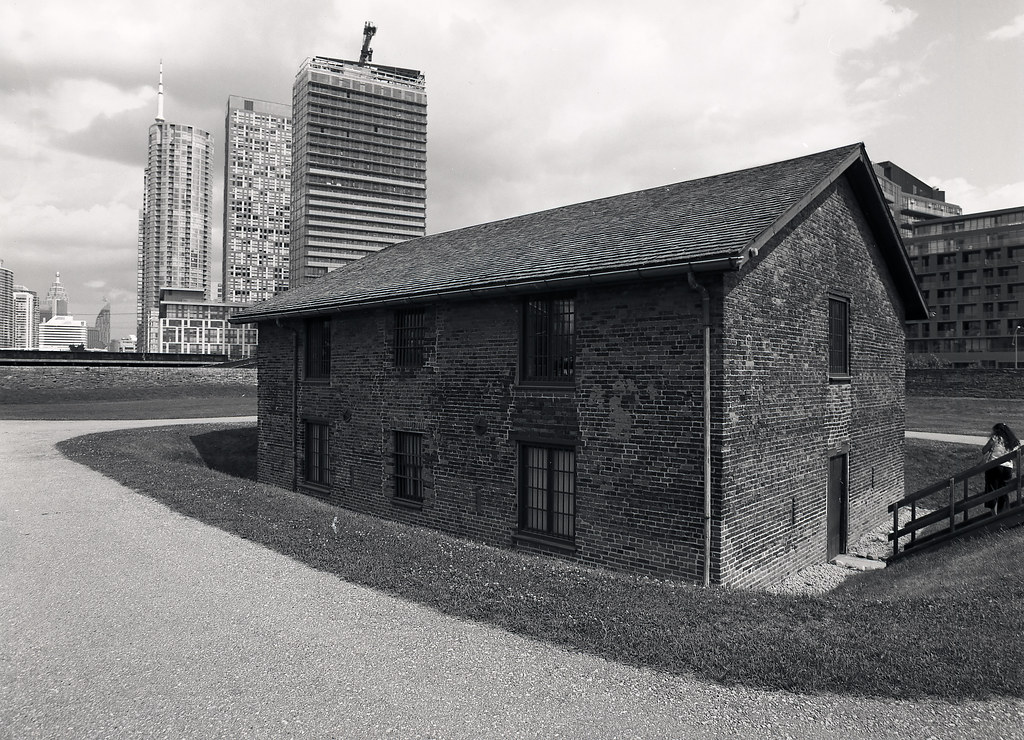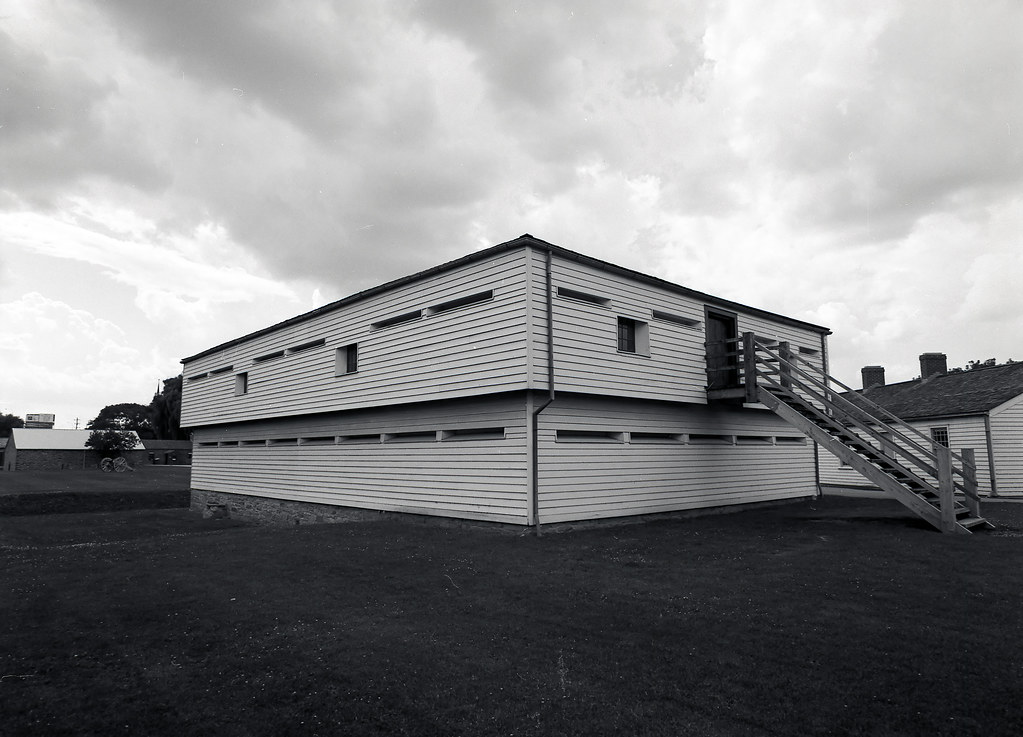Built in 1793 to defend the newly founded capital of Upper Canada (Modern Day Ontario), the town of York. The capital was moved from Newark (Niagara-On-The-Lake) when the General John Graves Simcoe, the Lieutenant Governor of Upper Canada decided that Newark was too close to the newly formed and independent United States of America. The fort, built on the shores of Lake Ontario was built by men of the Queen's York Rangers, an irregular unit of soldiers that saw action during the American Revolutionary War. Fort York was a simple fort consisting of a powder magazine, two blockhouses, and a government house. The town of York had several other blockhouses to better defend the town. When Simcoe was replaced in the early 19th century by Major General Isaac Brock, Brock made sure that the Fort's defenses were strengthened and several regiments of militia were raised to support the British regulars stationed at the fort. When war was declared in 1812, the town of York survived the first year of the war without an attack. However on April 27th, 1813, an American fleet engaged the shore batteries and landed troops, unable to stand against the greater number of American troops, the commander of the British Forces, Roger Hale Sheaffe (Brock had been killed at the Battle of Queenston Heights in October of 1812) ordered the magazine destroyed and marched the regulars off to Kingston leaving the militia to handle the surrender. The powder magazine exploded killing many American and British troops. The American forces overran the town of York, destroying the fort, the Parliament Buildings, and looting the town. British forces did not return until the fall of 1813 and began to rebuild the fort under the orders of Major General Francis de Rottenburg, who had replaced Sheaffe. A third attack against York was repelled by the newly built fort. The fort continued to serve the British Army, and the Canadian Army into the 19th century with several new buildings constructed. As the Toronto shoreline moved further away from the old Fort, it became clear that a new fort would need to be constructed. New Fort York was built on what is now the Canadian National Exhibition grounds, only one building from this fort remains. The old fort continued to see use well into the first and second world wars. Today the old fort remains the biggest collection of War of 1812 era buildings in Canada, with the Blockhouses and Brick Magazine, and some of the earthwork walls dating to 1813. A second magazine was built in 1815. Other buildings dating to the 1820 and 1830s are reconstructions with original materials. The fort itself is also unique in the sense that it is completely surrounded by 21st century Toronto (as York is now called), and despite many attempts (a factory, an expressway, and a streetcar line), the Fort remains a pocket of the 19th century in the city.
Looking down into the Fort from Bathurst St.
The main gates of Fort York.
The 1815 Brick Magazine
The 1826 Officers Quarters and Kitchen
The 1813 brick magazine, expanded in the 1830s in response to the Rebellions.
One of two original 1813 blockhouses. This one contains the Fort's museum with several original artifacts, weapons, and examples of uniforms of soldiers of the various eras.
Photos: Pentax 645 - SMC Pentax A 645 35mm 1:3.5 - Ilford Pan F+ (ASA-25)
Developed in Agfa Rodinal (1+100) for 15 minutes at 20C.



 LinkBack URL
LinkBack URL About LinkBacks
About LinkBacks







 Reply With Quote
Reply With Quote